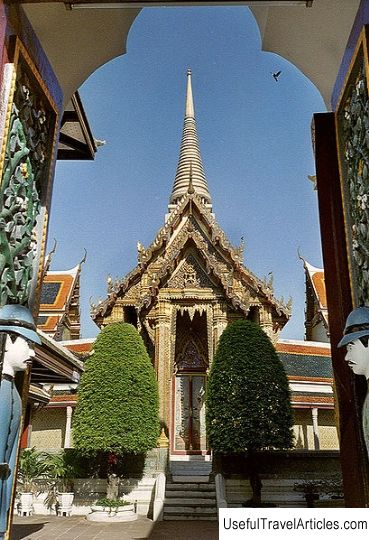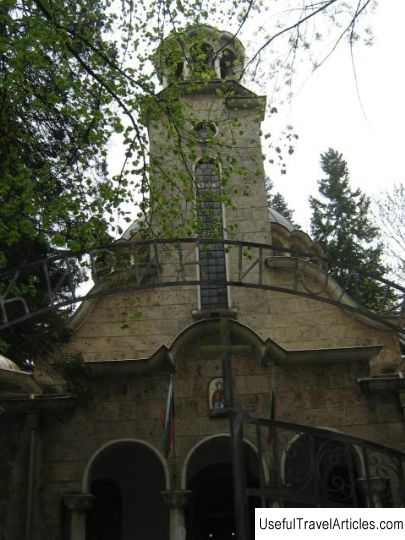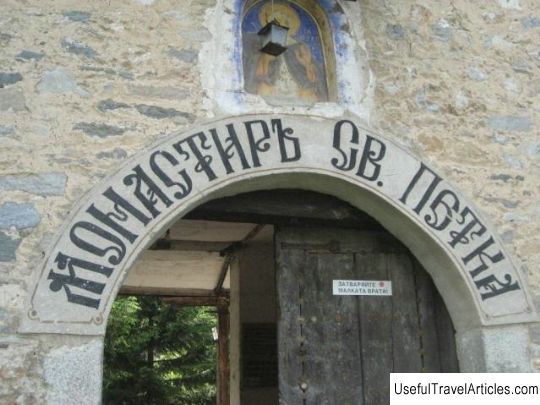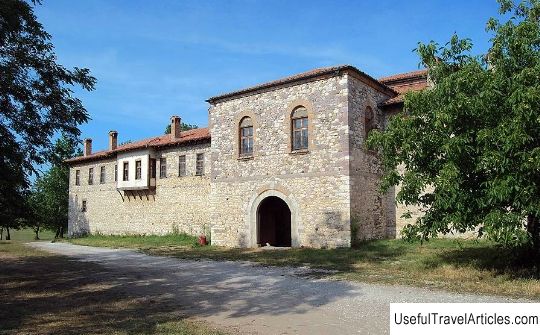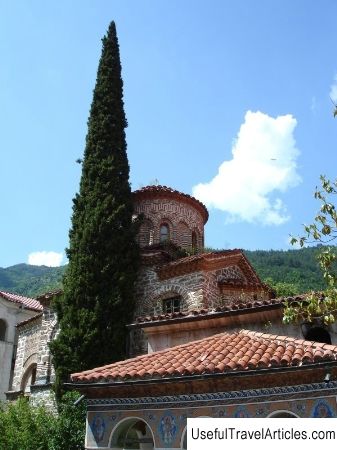Monastery of St. Kirika and Yulita description and photo - Bulgaria: Asenovgrad
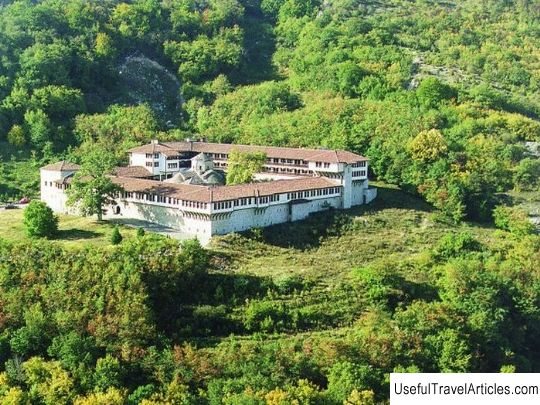
Gorovodensky Monastery of St. Kirika and Yulita description and photo - Bulgaria: Asenovgrad. Detailed information about the attraction. Description, photos and a map showing the nearest significant objects. Photo and descriptionThe Gornovodsky monastery of Saints Kirik and Yulita is a large Orthodox monastery located about two kilometers southwest of the city of Asenovgrad. The exact date of the construction of the holy monastery not known. However, there is evidence that it was built in the first half of the 14th century. next to the spring. In the first centuries of its existence, the monastery was repeatedly destroyed and burned. In the correspondence of the priest Methodius Draginov it is mentioned that in 1657, during the period of violent Islamization of Chepino (Western Rhodope), the monastery was again destroyed along with other Christian churches. The patron saint of the monastery is also unknown, since the monastery is named after Saints Kirik and Julita, and the main church under it is named after Saint Paraskeva. It is believed that in these places there were two holy cloisters not far from each other: the first stood near a healing spring, and five hundred meters away there was another monastery complex. In 1810, both buildings were burned down. The restoration of the Gorovodensky monastery began in 1816 and lasted until 1835. The church consecration ceremony took place on October 15, 1850. The oldest building with a dome (1808) is the oldest building with a dome (1808), between 1835 and 1838 the main buildings were built, and in 1850 - a chapel at the source, in which some fragments of ancient frescoes. In the middle of the 19th century. the monastery passed into the hands of the Greek Church and was again given over to the Bulgarian Orthodox Christians only in 1930. The complex was badly damaged by a fire in 1924 and an earthquake in the city of Chirpan in 1928. In the 20-30s of the 20th century, a religious school was located in the premises of the monastery. Later, during the war years (from 1943 to 1944), there was a concentration camp called "St. Kirik". After September 9, 1944, when the Communist Party came to power in the country, the monastery fell into disrepair, and then was turned into a home for the mentally ill. In 1981, the Union of Architects of Bulgaria received the official consent of the authorities to restore the monastery. The reconstruction was carried out under the direction of Hristo Radev. Today it is a beautiful cross-domed temple with one apse. The inside of the monastery is almost entirely painted with frescoes. In the 20-30s of the 20th century, a religious school was located in the premises of the monastery. Later, during the war years (from 1943 to 1944), there was a concentration camp called "Saint Kirik". After September 9, 1944, when the Communist Party came to power in the country, the monastery fell into disrepair, and then was turned into a home for the mentally ill.In 1981, the Union of Architects of Bulgaria received the official consent of the authorities to restore the monastery. The reconstruction was carried out under the direction of Hristo Radev. Today it is a beautiful cross-domed temple with one apse. The inside of the monastery is almost entirely painted with frescoes. In the 20-30s of the 20th century, a religious school was located in the premises of the monastery. Later, during the war years (from 1943 to 1944), there was a concentration camp called "Saint Kirik". After September 9, 1944, when the Communist Party came to power in the country, the monastery fell into disrepair, and then was turned into a home for the mentally ill.In 1981, the Union of Architects of Bulgaria received the official consent of the authorities to restore the monastery. The reconstruction was carried out under the direction of Hristo Radev. Today it is a beautiful cross-domed temple with one apse. The inside of the monastery is almost entirely painted with frescoes. when the communist party came to power in the country, the monastery fell into disrepair, and then was turned into a house for the mentally ill.In 1981, the Union of Architects of Bulgaria received the official consent of the authorities to restore the monastery. The reconstruction was carried out under the direction of Hristo Radev. Today it is a beautiful cross-domed temple with one apse. The inside of the monastery is almost completely painted with frescoes. when the communist party came to power in the country, the monastery fell into disrepair, and then was turned into a house for the mentally ill.In 1981, the Union of Architects of Bulgaria received the official consent of the authorities to restore the monastery. The reconstruction was carried out under the direction of Hristo Radev. Today it is a beautiful cross-domed temple with one apse. The inside of the monastery is almost entirely painted with frescoes.     We also recommend reading Museum of watermelon description and photo - Russia - South: Astrakhan region Topic: Monastery of St. Kirika and Yulita description and photo - Bulgaria: Asenovgrad. |
